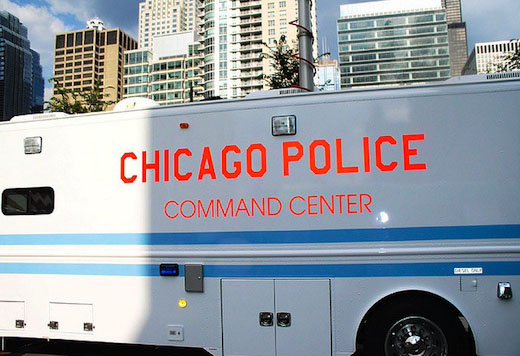
CHICAGO – A lively symposium on this city’s infamous “Red Squad” took place June 1 at the Chicago History Museum. The Red Squad was a secret police unit used to spy on, harass, even target for destruction, organizations that ranged from community and peace organizations to labor unions and the Communist Party USA. The History Museum has decades of records on the activity of the Red Squad, thanks to a court order.
That court order came from a case that was filed by Attorney Richard Gutman, the keynote speaker at the symposium. Gutman was honored for his 26 years of leadership in the legal fight against the illegal activities of the Red Squad, as a result of which came an out-of-court settlement that paid $306,250 divided among ten organizations and ten individuals. That victory was won despite the fact that Gutman’s legal team itself was infiltrated by the police.
Panelists from ten organizations spoke at the symposium. Timuel D. Black, Jr. reported on the Red Squad’s harassment of the civil rights movement, including Operation Breadbasket, and founders of PUSH. Another speaker, William B. Kelley, talked about being branded as a Communist for his activism for gay rights.
“The Red Squad was one part of the undermining of democracy itself, the undermining of those who wanted to build justice and democracy and freedom for all. And it is not just a thing of the past. The radical right wing still attacks and demonizes those working for immigration reform, for marriage equality, unions, voting rights and more,” said Heather Booth, a leading strategist for progressive campaigns. “It split the labor movement from the movements of the New Left, the women’s movement and most of the civil rights movement.”
The Red Squad sent infiltrators aimed at creating suspicion within these organizations. Some tried to provoke violence; others stole membership lists, of which sometimes there was only a single copy. Because of this activity, people lost jobs and some were even jailed for associating with, or being, Communists.
One speaker, Bea Lumpkin, brought her unique long-term perspective to the discussion. Described as an “activist for labor, peace and socialism since 1933,” Lumpkin linked Red-Squad -type activity to repression that dates “back to before Spartacus, when thousands of slaves fighting for freedom were crucified along the Apian Way. But in the end, the people unite and the repressors are overcome.”
The morning session heard from the Reverend Patricia Novick, widow of civil rights leader Al Raby, who discussed Red Squad attempts to disrupt the civil rights movement.
Benny Lee, co-founder of the National Alliance for the Empowerment of Ex-Offenders and a former gang leader, spoke about the Black Panther Party’s efforts to bring gang members together to help their communities and become service youth organizations, instead of fighting each other. He said that the Red Squad actively worked to counter those efforts.
Carol Lee Lopez and Obed Lopez, representing LADO, the Latin American Defense Organization, described other ways the Red Squad split the progressive movement including organizations like the Young Lords and the Fair Play for Cuba Committee. Obed Lopez talked about one organization which refused to work with him because he was Mexican, not Puerto Rican, a reaction that signaled to Lopez that the group had been taken over by the Red Squad.
Doris Strieter and Reverend Tom Strieter spoke about Red Squad and FBI spying on the Maywood NAACP youth group then led by Fred Hampton. The assassination of Hampton and Clark was made possible by infiltrators who provided a map of their apartment and loaded their drinks with drugs. The Strieters, who were personal friends of Hampton, also work as volunteer editors, including on the first volume of homilies of Salvadoran Archbishop Oscar Romero and Lumpkin’s recently published book, “Joy in the Struggle, My Life and Love.”
Lively input from the audience added many other examples of Red Squad harassment, including repeated IRS audits of people with ordinary incomes, such as teachers. These valuable archives are now available for study by completing a museum application form.
Photo: bcbeatty/CC










